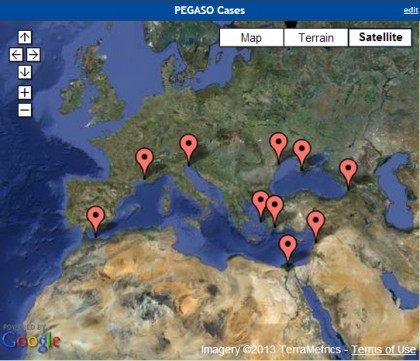
April 2013
 | April 2013 |
Indicator experience in PEGASO CASEs | |
|---|---|
 Several PEGASO CASEs (pilot sites) are testing and validating the assessment tools developed during the project at different spatial scales. At the moment, all three CASEs in the Black Sea have started work on the methodological factsheets and indicators. The Guria Coastal region (Georgia) is adapting the ICZM progress indicator for use at national level, while the Sevastopol CASE (Ukraine) has gained useful experience with the water quality and pollution indicators in particular. The Danube Delta CASE (Romania) is applying biodiversity indicators involving species, habitats, fragmentation, etc., and is also testing LEAC (Land and Ecosystem Accounting) methodology in the protected area. In the Eastern Mediterranean, the Aegean Islands CASE (Greece) has worked on the use of indicators such as maritime traffic, urban networks and fisheries. The Dalyan-Köyceğiz Special Protected Area CASE in Turkey has developed a subset of local indicators to report on the state of the environment as well as an assessment of the existing governance and management structure. The Nile Delta CASE in Egypt has focused more on the development of coastal land use assessment and planning and has recently submitted the conclusions of these studies to the Egyptian Ministry of State for Environmental Affairs. In the Western Mediterranean, the Bouches du Rhône CASE (France) has identified the most suitable indicators at the site and is currently using a participatory process to prioritize them so that stakeholders can share a common vision for their coastal environment. Challenges have arisen in other sites such as the Al Hoceima coast CASE (Morocco), where there is limited information available for planning and therefore work has to start on building local capacity for future planning. The North Adriatic CASE, which is currently working on sharing experience in the use of models and data within the Decision Support System, has acquired practical experience in communicating and developing cooperation using other tools. The 10 Collaborative Application SitEs (CASEs) are thus providing good feedback on the assessment tools developed during the project at different spatial scales and thereby contributing to the regional assessment in the Mediterranean and Black Seas. More info: f.santoro@unesco.org |
|